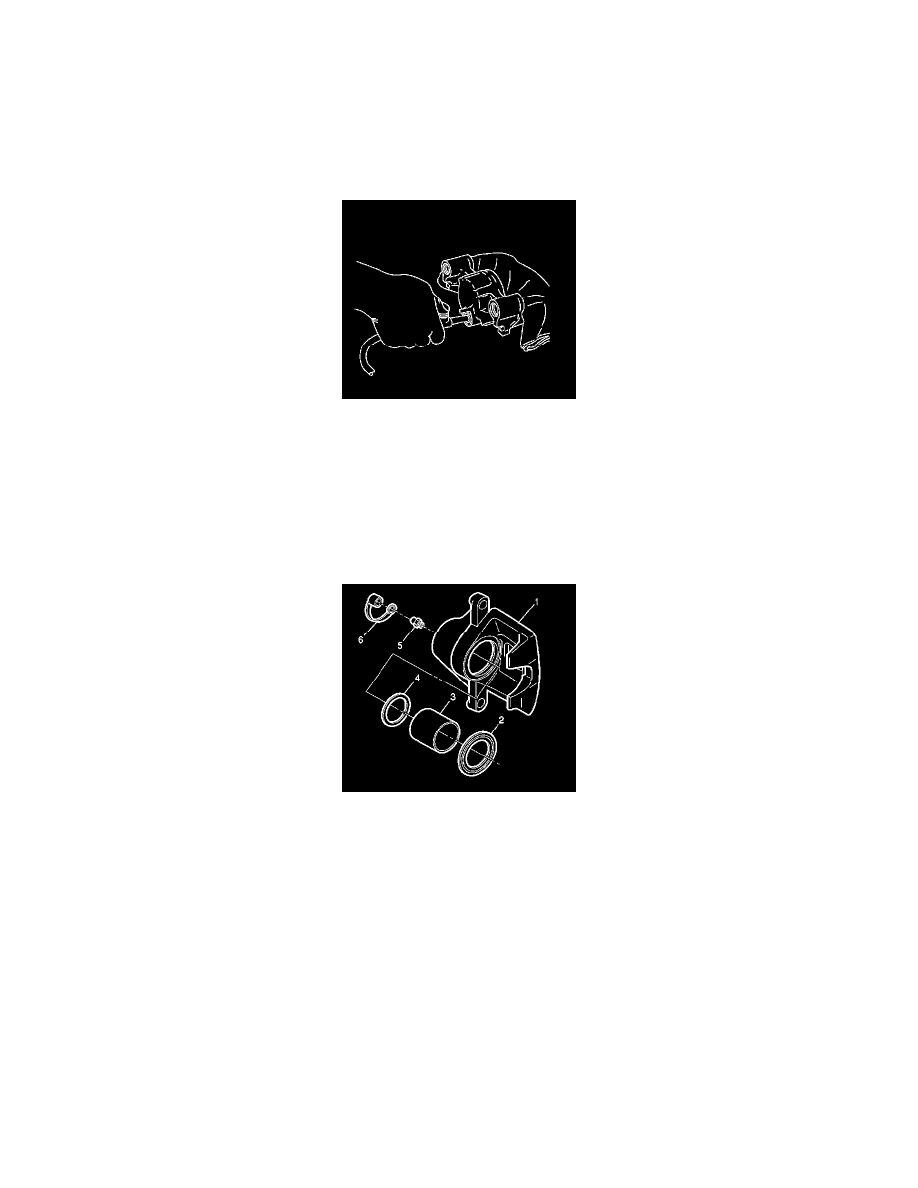Corvette V8-6.0L VIN U (2005)

Brake Caliper: Service and Repair
Brake Caliper Overhaul - Rear
Brake Caliper Overhaul - Rear
Caution: Refer to Brake Fluid Irritant Caution in Service Precautions.
Notice: Refer to Brake Fluid Effects on Paint and Electrical Components Notice in Service Precautions.
1. Remove the rear brake caliper from the vehicle.
Caution: Do not place your fingers in front of the piston in order to catch or protect the piston while applying compressed air. This could
result in serious injury.
Notice: Use clean cloths to pad interior of caliper housing during piston removal. Use just enough air to ease the pistons out of the bores. If the
pistons are blown out, even with the padding provided, it may be damaged.
2. Remove the brake caliper piston from the caliper bore by directing low pressure compressed air into the caliper bore through the fluid inlet hole.
3. Using a small wooden or plastic tool, remove the piston dust boot seal (2) from the seal counterbore in the caliper (1) and discard the boot seal.
4. Using a small wooden or plastic tool, remove the piston seal (4) from the caliper bore and discard the piston seal.
5. Remove the bleeder valve (5) and cap (6) from the caliper (1).
6. Important: Do not use abrasives to clean the brake caliper piston.
Clean the brake caliper piston bore and seal counterbore, and the caliper piston with denatured alcohol, or equivalent.
7. Dry the caliper piston bore and counterbore, and the piston with non-lubricated, filtered compressed air.
8. Inspect the caliper bore for cracks, scoring, pitting, excessive rust, and/or excessive corrosion.
9. If light rust or light corrosion are present in the caliper bore, attempt to remove the imperfection with a fine emery paper. If the imperfection
cannot be removed, replace the caliper assembly.
10. If cracks, scoring, pitting, excessive rust, and/or excessive corrosion are present in the caliper bore, replace the caliper assembly.
11. Inspect the caliper piston for cracks, scoring, and/or damage to the chrome plating. Replace the caliper piston if any of these conditions exist.
12. Lubricate the new piston seal with Delco Supreme 11(r) GM P/N 12377967 (Canadian P/N 992667), or equivalent DOT-3 brake fluid from a
clean, sealed brake fluid container.
13. Install the lubricated, new piston seal into the caliper bore.
